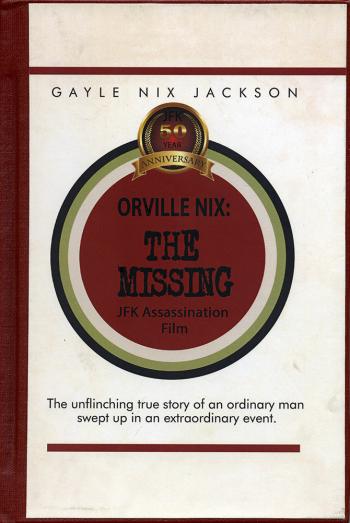[T]he Warren Commission’s Report was an interim fabrication that was intended only to satisfy immediate political needs and not to answer the questions of the “who” and “why” of Dallas. . . . [I]t is time we pulled the plug on the Warren Report’s life-support system.—history professor Gerald D. McKnight

In recent years numerous books on the assassination of President John F. Kennedy have been published. Most fall into either of two categories. In the first category are the books that praise the Warren Commission or buy into the principal findings of the Warren Report; on the whole, these books are not worth much. In the second category are the books that take the opposite position; and while some of these were written by crackpots or by intelligence agency assets clandestinely seeking to impede the search for truth about the assassination, many others are the result of legitimate research or investigation by serious scholars or writers.
The best of the 2014 books, in my opinion, is Gayle Nix Jackson’s Orville Nix: The Missing JFK Assassination Film (Semper Ad Meliora Publishing).
Orville Nix, who died in 1972 at the age of 60, became a person of historical interest on Nov. 22, 1963, when, using his 8 mm home movie camera, he caught on silent color film the final phase of the Kennedy assassination. Nix was standing just across the street from Dealey Plaza, near the intersection of Main and Houston Streets and to the left of the presidential limousine as it proceeded down Elm Street at the unusually low speed of 11.2 mph. When Nix began filming, the target vehicle, the slow-moving limousine, now inside what military ambush manuals call a “kill zone,” was already under deadly fire. The portion of the film depicting the assassination and its immediate aftermath is only six and one-half seconds long and consists of 122 frames.
Except for the Zapruder film (another 8 mm silent color home movie), the Nix film is our most important motion picture depiction of the assassination. Unlike the Nix film, the Zapruder film was taken from a position to the right of the limousine. Both films were used by the Warren Commission to assist in calculating the time frame of the assassination and fixing the various locations of the limousine on Elm.
A high-quality copy of the Nix film is on YouTube. View it. When the portion of the film capturing the assassination begins, we see an already wounded JFK in distress being tended by his wife Jacqueline Kennedy, who is sitting next to him on his left. Then suddenly, when a bullet crashes into his skull, JFK’s head is thrown violently backwards (indicating that, contrary to the Warren Report, the shot did not come from the rear) and for an instant what appears to be a puff of smoke emerges from his head. In her pink suit the stunned First Lady then turns around to her right and rises out of her seat and crawls onto to the limousine’s trunk. Meanwhile, heroic Secret Service agent Clint Hill, racing up from the followup car, climbs with difficulty onto the rear of the trunk, approaches the First Lady and begins gently but firmly to nudge her back into her seat. Here the assassination part of the Nix film ends.
Unbelievably, there is nothing in the Warren Report or its 26 volumes of accompanying exhibits indicating that Orville Nix, a known eyewitness to the assassination, ever was questioned about the events of the assassination itself by the Warren Commission staff or by the FBI (which performed most of the Commission’s investigative work, including the interviewing of witnesses). No published Warren Commission documents indicate that Nix was ever asked, for example, about the number and the direction of the shots fired at the limousine. The only documents published by the Warren Commission that concern Nix focus on the characteristics of his camera and how Nix had operated it while filming the assassination.
This is strange. Many—but certainly not all—of the assassination witnesses were interviewed by local law enforcement officers or FBI agents and questioned about the assassination, or submitted affidavits on what they observed, or testified before or gave oral depositions to the Warren Commission or its staff. The evidence these witnesses provided as to what they thought had happened is set out in the Warren Report and the 26 volumes of exhibits published by the Commission. Abraham Zapruder, for example, was orally deposed by Warren Commission staff and asked about the assassination. The transcript of his testimony appears in volume 7 of the exhibits published by the Warren Commission.
(Typically, the Commission waited until July 22, 1964—eight months after the assassination—to question Zapruder, whose deposition lasted less than 90 minutes and whose testimony takes up only eight printed pages. Zapruder was one of six persons deposed that day by the same Commission staff member, who, in the words of one assassination scholar, was engaging in “assembly-line interrogations.” When shown and asked to comment on various still frames from his famous film, Zapruder complained that “I wish I had an enlarger here for you.” Typically, the staff member, who had not bothered either to bring an enlarger for the benefit of the witness or to advise the witness to bring one, responded by changing the subject and never offered to procure an enlarger to assist this crucial witness.)
Orville Nix thought it odd that the FBI did not seem interested in interviewing him about the facts of the assassination. The questions FBI agents asked him related to his act of filming the assassination. One agent did ask him how many shots he heard, and Nix told him at least four, maybe five. When the agent asked Nix which shots hit the president, Nix replied that he wasn’t sure, but he knew that it was the third shot that hit JFK in the head. The agent appears not to have written down what Nix said about the shots. None of Nix’s statements to the FBI about the shooting (as opposed to his filming) ended up in any FBI report.
Scandalously, therefore, the 27 volumes published by the Warren Commission reveal nothing about what Orville Nix, an important witness, saw or heard when the assassination took place.
Fortunately, however, due to the efforts of New York attorney Mark Lane, one of the earliest critics of the Warren Commission, who conducted a filmed interview of Nix, we now know in his own words exactly what Orville Nix observed in Dealey Plaza on Nov. 22, 1963.
Lane, along with Edward Epstein, the now deceased Sylvia Meagher and Harold Weisberg (also now deceased), is among the most renowned of the first generation of Warren Report critics; by 1967 each had written one or more books questioning the performance of the Warren Commission and challenging the accuracy of the Report. Those books—Epstein’s Inquest (1966), Lane’s Rush to Judgment (1966), Meagher’s Accessories After the Fact (1967) and Weisberg’s Whitewash: The Report on the Warren Report (1965), Whitewash II: The FBI-Secret Service Cover-Up (1966) and Oswald in New Orleans (1967)—are now classics.
Lane’s filmed interview of Nix on black and white sound film was in 1966, three years after the assassination and six years before Nix’s death. The Orville Nix interview is on YouTube. Take a look at it. During the interview, Nix tells Lane that at the time the shots were fired he thought they came not from the School Book Depository, which was behind the limousine, but instead from the stockade fence, which was at the top of the grassy knoll and to the right of the limousine. Nix also says that other witnesses—“most everyone”—and even a Secret Service agent friend of his were in agreement at the time that the shots came from the fence. Nix also tells Lane that some frames were missing when his film was returned to him by the FBI.
Gayle Nix Jackson, the author of Orville Nix: The Missing JFK Assassination Film, is Orville Nix’s granddaughter. Subtitled The Unflinching True Story of an Ordinary Man Swept Up in an Extraordinary Event, the book includes an abbreviated biography of Orville Nix, who worked for the federal government as an air conditioning repairman, and was born, lived and died in Dallas, TX. A modest, gentlemanly, straightforward man, Nix had many friends, including Forrest Sorrels, the Secret Service Special Agent in Chief of the Dallas office—one of the security officials responsible for the catastrophic decision to route JFK’s motorcade through Dealey Plaza.
Even if you don’t read Gale Nix Jackson’s book, you might consider looking, on YouTube, at the two-and-a-half minute video by her daughter (and Orville Nix’s great granddaughter) Taylor Jackson, who discusses the original Nix film, the mystery of its disappearance and the continuing efforts of the Nix family to recover it.
The best parts of Gayle Nix Jackson’s book deal with (1) what Orville Nix did and observed in Dealey Plaza on Nov. 22, 1963, and (2) the original Nix film itself and the various copies made over the years.
Here are some of the facts the book presents:
â— Like Abraham Zapruder, who also personally watched a president shot in the head, Orville Nix had recurring nightmares the rest of his life.
â— Nix heard more than the three shots the Warren Report claimed had been fired. “I heard four or five shots… I heard at least four shots, maybe five.” This of course is what he had previously told the FBI agent who failed to write down what Nix said.
â— Although the Warren Report concluded that all the shots were fired from the Book Depository behind the limousine, eyewitness Nix believed the shots “came from that little park area [the grassy knoll to the right of the limousine] in front of the train yards by the Triple Underpass.” This of course is what Nix said in his 1966 interview with Mark Lane.
â— Nix delivered his film to the FBI on Dec. 1, 1963. When it was returned to him several days later, he became “convinced that his returned film looked changed from the time he had seen it [when it was first developed].” The film, Nix believed, was “different” after its return by the FBI. Nix said something similar in his 1966 interview with Mark Lane, where he also told Lane that some of the frames in his film had been “ruined.”
â— Nix delivered his motion picture camera to the FBI in January 1964. When it was returned to him the following June, it had been taken apart and was in pieces. “[T]he camera of history… the camera that took an important assassination film… [had been] destroyed.” The FBI apologized, repaired the camera and also gave Nix a new one. This satisfied Nix.
â— Nix later sold the original film to UPI for a paltry $5,000 and a cowboy hat, but was allowed to retain a copy. The original was to be returned to Nix after 25 years. UPI kept the film inaccessible to the public and never returned it to the Nix family.
â— In 1965, UPI took the Nix film for a special optical scan to a secretive, CIA-connected company that manufactured sophisticated reconnaissance cameras for use in spy satellites.
â— The original Nix film has probably been destroyed. At any rate, the present location of the original Nix film is unknown. Believing the film may still exist, the Nix family continues to work for its return.
â— According to one theory, in 1974 a UPI executive placed the original Nix film in a safety deposit box in a New York City bank. This, it is said, is the last known location of the original film, which, it is claimed, has not been seen since. The building housing the bank, it appears, was later demolished.
â— According to a perhaps more likely theory, the original Nix film disappeared in 1978, after it was returned to UPI by the U.S. House of Representatives Select Committee on Assassinations.
â— A copy of the Nix film was broadcast on television for perhaps the first time in a 1988 British TV documentary, “The Day the Dream Died.”
â— The Warren Commission’s copy of the Nix film (which it obtained from the FBI) has been in the National Archives since 1964. Not until 1966 was a researcher (Harold Weisberg) even allowed to see the copy.
The Warren Commission’s critics have compiled long lists of examples of the Warren Commission not doing its job. The story of Orville Nix and his film, told by author Jackson, provides us with even more examples of the inadequacies of the government’s investigation of JFK’s assassination. Let’s look at just three.
First, the Warren Commission took no steps to ensure the preservation and availability of the original of the second most important film of the assassination, and as a result of that negligence the original has been missing for years and may well have been destroyed. Does this inspire confidence in the investigation of the assassination of John F. Kennedy?
Second, even though he had witnessed the assassination, filmed part of it and handed his film over to the FBI, Orville Nix, as previously noted, was not asked to testify before the Warren Commission. Furthermore, also as previously noted, neither the Warren Report nor any of the Commission’s published materials tells us anything about what Nix saw or heard in Dealey Plaza. If the government agencies investigating the murder of a president did not think it necessary or appropriate to put on the record a statement of what Nix observed, what faith can we have in such an investigation?
Third, it was not the government but a private researcher who interviewed Nix on film, asked him questions about the shots fired and made sure the filmed interview was preserved and made available to the public. Does this alleviate concerns about the adequacy of the official investigation?
Orville Nix: The Missing JFK Assassination Film is further proof, half a century after the assassination, that Americans must embrace a very painful truth. That truth is not just that the Warren Commission failed to adequately investigate the murder of a president or that the Warren Report was fundamentally wrong. Rather, the truth that anguishes is that the official government investigation of the assassination of President John F. Kennedy was a bad-faith investigation, and the Warren Report, the result of that investigation, is, as to its main conclusions, a cunning piece of deception.
Donald E. Wilkes, Jr. is a professor emeritus at the University of Georgia, where he taught in the law school for 40 years. This is his 39th published article on the JFK assassination.
Like what you just read? Support Flagpole by making a donation today. Every dollar you give helps fund our ongoing mission to provide Athens with quality, independent journalism.










